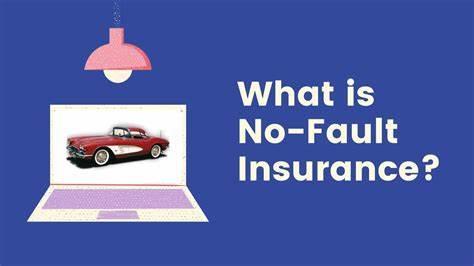Trampolines provide hours of entertainment and exercise for families, but they also come with significant risks. In Florida, home insurance companies consider this when calculating policy quotes. Homeowners may find themselves facing higher premiums or stricter liability limits due to the presence of a trampoline on their property. This article examines the impact of trampolines on Florida home insurance quotes, detailing the various factors contributing to higher premiums, how trampolines affect liability coverage, and ways homeowners can mitigate these risks.
Understanding Trampolines’ Role in Florida Home Insurance
Regarding home insurance in Florida, trampolines are often considered high-risk items. Insurers classify them as “attractive nuisances,” a legal term referring to objects that can attract children and lead to accidents. Homeowners with trampolines experience increased scrutiny from insurance providers because these recreational items significantly raise the potential for injury claims. Consequently, insurers factor this increased risk into the cost of home insurance policies.
The primary concern for Florida home insurance companies is the liability associated with trampoline injuries. According to the Consumer Product Safety Commission, thousands of trampoline-related injuries occur annually, leading to substantial medical expenses and potential lawsuits. In Florida, where outdoor activities are common year-round, the risk of such incidents is even more pronounced, prompting insurers to adjust their risk assessments accordingly.
In addition to the legal and medical implications, trampolines can also affect a property’s structural integrity. Improper installation or maintenance can damage property, further influencing an insurer’s risk calculations. For instance, a trampoline that the owner does not securely anchor can become a projectile during a hurricane, which is common in Florida, causing damage to the house and surrounding properties.
Ultimately, a trampoline’s presence can significantly alter Florida residents’ home insurance landscape. Insurance companies heavily weigh the increased likelihood of claims and potential legal liabilities when determining policy terms and premiums. Understanding these dynamics is crucial for homeowners looking to manage their insurance expenses effectively at Flordia Insurance Quotes.
Factors Contributing to Higher Insurance Premiums
Several factors contribute to the higher insurance premiums associated with owning a trampoline in Florida. First and foremost is the increased risk of injury. Trampoline-related injuries range from minor bruises to severe fractures and even spinal cord injuries, which can lead to costly medical bills and legal claims. Insurers must account for these potential liabilities, driving up the cost of premiums for homes with trampolines.
Another contributing factor is the frequency of claims. Data shows that homes with trampolines are more likely to file insurance claims than those without. This higher claim frequency directly impacts the insurer’s cost calculations, increasing premiums. For Florida homeowners, the fun of owning a trampoline comes with a financial trade-off in terms of higher insurance costs.
The physical location of the trampoline on the property also matters. Trampolines near fences, trees, or other structures pose additional risks, such as falls from significant heights or collisions with hard surfaces. Insurance companies consider these aspects when evaluating a property’s risk profile, which can lead to increased premiums.
Finally, the homeowner’s preventative measures play a role. Insurers may offer slightly lower premiums if the homeowner equips the trampoline with safety nets or padding and adheres to manufacturer guidelines for installation and use. However, even with these precautions, the inherent risks associated with trampolines often lead to higher overall insurance costs.
How Trampolines Affect Liability Coverage Limits
The impact of trampolines on liability coverage limits is a critical consideration for Florida homeowners. Liability coverage protects homeowners against legal and medical expenses incurred if an accident injures someone on their property. This risk is significantly magnified with trampolines, prompting insurers to impose stricter liability coverage limits or even exclude trampoline-related injuries altogether.
Many insurance policies include exceptions specifically for trampolines, meaning that the carrier may not cover any injury from trampoline use. This lack of protection leaves homeowners vulnerable to substantial out-of-pocket expenses if an accident occurs. In some cases, insurers may offer liability coverage for trampoline injuries but only up to a specific limit, which might be insufficient to cover the full extent of potential claims.
Higher liability coverage limits are an option, but they come at a cost. Homeowners can increase their liability limits to ensure adequate protection, resulting in higher premiums. The decision to raise these limits should be weighed carefully against the increased financial burden it imposes.
Another approach is to consider an umbrella policy, which provides additional liability coverage beyond the standard home insurance policy. While this offers a higher level of protection, it also comes with higher costs. For Florida homeowners, understanding the nuances of liability coverage and making informed decisions about their insurance needs is vital to mitigating the risks associated with trampoline ownership.
Mitigating Risks Associated with Trampoline Ownership
Despite the risks, homeowners can take several steps to mitigate the impact of trampolines on their home insurance quotes. First and foremost is the implementation of safety measures. Installing safety nets and padding and ensuring proper anchoring can significantly reduce the risk of injury and property damage, making the property less risky in the eyes of insurers.
Additionally, homeowners should establish and enforce strict usage guidelines. Limiting the number of users simultaneously, supervising children, and prohibiting risky behaviors like flips or somersaults can help prevent accidents. Clear rules and active supervision demonstrate to insurers that the homeowner manages the associated risks.
Regular maintenance and inspections are also crucial. Homeowners should routinely check for wear and tear, ensure the trampoline remains securely anchored, and promptly address safety concerns. Demonstrating a commitment to upkeep can positively influence the insurance company’s risk assessment, potentially leading to more favorable premium rates.
Finally, communicating openly with the insurance provider is essential. Homeowners should inform their insurers about the presence of a trampoline and discuss the safety measures in place. Transparency can foster a better relationship with the insurer and may result in recommendations for additional ways to mitigate risks, ultimately leading to more manageable insurance costs.
Trampolines undoubtedly add an element of fun and exercise for families but come with significant insurance implications in Florida. The increased risk of injury and property damage leads to higher premiums and stricter liability coverage limits. However, homeowners can proactively mitigate these risks and lower their insurance costs. Florida residents can make informed decisions to protect their families and financial well-being by understanding the relationship between trampolines and home insurance. Then, they can get Florida home insurance quotes at https://floridainsurancequotes.net/florida-homeowners-insurance/ to protect their children today.





